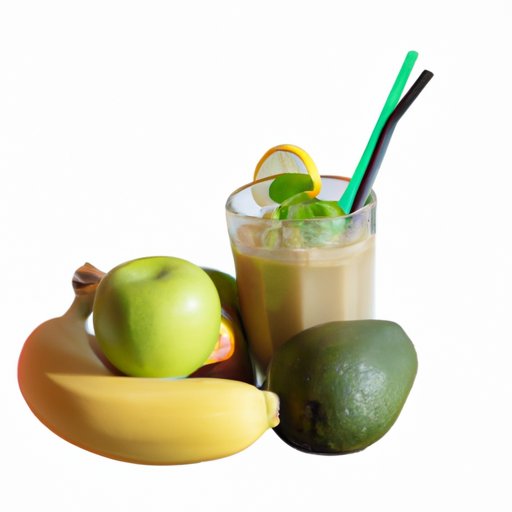
Introduction
A liquid diet is a type of diet that involves consuming primarily liquids and foods that are in liquid form. Liquid diets are important for individuals recovering from surgeries, medical treatments, or illnesses. This diet helps to ensure that individuals consume adequate amounts of nutrients, maintain hydration, and rest their gastrointestinal system. In this article, we provide a comprehensive guide on what to eat on a liquid diet.
Types of Liquid Diet
There are three types of liquid diets; clear liquid, full-liquid, and pureed. A clear liquid diet includes fluids that are clear at room temperature and do not contain any solid particles. Full-liquid diets, on the other hand, allow for consuming liquids that are not transparent, but the foods should still be in liquid form. Pureed diet is more lenient in terms of texture, pureed foods have a smooth consistency, and they are often thicker than liquids. Depending on the medical condition, the type of liquid diet recommended might vary.
Examples of foods that can be consumed on a clear liquid diet include water, apple juice, and broths. A full-liquid diet may include milk, smoothies, juices, and soups, and for a pureed diet, foods might include mashed potatoes, hummus, or pureed fruits. It is important to follow the diet recommended by a doctor or dietician as it will be tailored to the individual’s specific medical needs.
Benefits of Liquid Diet
There are several benefits to consuming a liquid diet. One of the advantages is that it is an easy way to obtain nutrition as it is generally easy to digest, which can be important for people who are undergoing medical treatments. Additionally, liquid diets help to keep the body hydrated, which is essential for maintaining overall health. Research indicates that liquid diets can reduce bloating and inflammation and promote weight loss.
Recipes for Liquid Diet
It might be difficult to consume only liquids, but there are various recipes that make a liquid diet enjoyable. Smoothie bowls that include frozen fruits, protein-rich greek yogurt, almond milk, and healthy fats such as nuts and nut butter is an easy way to get a wholesome breakfast. Before the addition of any liquid, the food should be blended, looking for a smooth and easy to swallow consistency. Homemade soup with you favourite veggies, gently cooked and blended for a simple, delicious pureed recipe. Almond milk can be an essential element in many of the liquid diet recipes and is healthy and nutritious. It is a great source of vitamin E, magnesium, and antioxidants. You can use almonds, water, and sweeteners such as stevia to achieve your desired mixture.
Challenges of Liquid Diet
It can be challenging to stick to a liquid diet, particularly for an extended period. The continuous intake of liquid foods may leave some people feeling hungry, and missing solid foods might be a challenge. To overcome these challenges, it is recommended to include enough protein in the diet to provide satiety. Another tip is to consume warm liquids to increase comfort; these include broth, hot soup, and warm milk.
Success Stories
Interviewing individuals who have succeeded in following a liquid diet can be insightful. One person’s experience is unique to them, and it can provide encouragement to others. In interviews, individuals have shared how liquid diets helped them with their medical conditions, such as reducing inflammation and promoting healing. Some people have shared tips and tricks they used when following a liquid diet, such as consuming broths with added protein powder to boost their daily protein intake.
Alternatives to Liquid Diet
It is essential to transition slowly from liquid diet to regular foods. To complement the liquid diet, one can incorporate low-fiber fruits and vegetables, such as bananas, cantaloupe, and avocado. However, certain types of food should undoubtedly be avoided during this period to ensure effectiveness.
Addressing Concerns
There are many concerns surrounding liquid diets, such as insufficient nutrient intake, difficulty maintaining weight, and the potential for rebound weight gain. Research has shown that a well-planned liquid diet can provide all necessary nutrients when consumed in adequate amounts. Consulting with a dietician and a medical professional before starting a liquid diet is highly recommended.
Conclusion
Following a liquid diet can be challenging, but with proper planning and preparation, it can be an effective way to recover from a medical condition or to lose weight. Experimenting with different recipes that provide wholesome nutrition can make it more enjoyable. Always consult with a dietician and a medical professional before starting a liquid diet. Finally, remember that there are additional websites and support groups that provide more information on liquid diet strategies and recipes.





